What shoes do I need for lifting?
Over the years of running StrongHer and introducing women of all sorts of backgrounds to lifting, we’ve observed a pretty consistent pattern: newbies turning up to the gym in running shoes! And while we absolutely love some of these trainers, they are … ahm, not quite right. Before you start regretting that late night decision to spend £150 on a pair of running shoes, let us explain!
There’s all sorts of training shoes out there: running shoes, ballet shoes, boxing shoes… the list goes on. And they are all purpose built. As our co-founder Tig put it: “You don’t see footballers training in ice skates, right? That’s because every sport has its different requirements. Same goes for strength training!”
So your running shoes investment is not in vain - the pair will absolutely improve your running and keep you injury-free. But leave those beauties in the gym changing rooms!
When it comes to finding the right shoe for strength training, this is what to look out for:
Support and Stability
The single most important thing you need to remember - your strength training shoe NEEDS to provide support and stability for those heavy lifts. What does that mean? Basically a firm and flat sole to ensure your weight (and the weight of … the weights) is distributed evenly during exercises like squats and deadlifts. Look for a shoe with a wide base and a low heel-to-toe drop (typically around 0-4mm) to maintain a solid and balanced platform. Why we love it? It minimizes the risk of ankle rolling and promotes proper form, which makes it less likely that you might injure yourself! Additionally, a shoe with a snug and secure fit around the ankle and midfoot is crucial to prevent unnecessary movement while lifting heavy sh*t.
Toe box, what’s that?
Alright, let's talk toe boxes — yep, that’s the space at the front of every shoe where you can (or in some cases - high heels we’re looking at you - can’t) move your toes. Now, why does this matter when you're hitting the gym? Sufficient room in the toe box allows toes to grip the floor, aiding stability and ground connection during various activities. It’s worth mentioning that finding a shoe with the right toe box for you will be a bit of a trial-and-error process, but it’s so important that your perfect shoe is out there, waiting for your feet to move in.
Shoe companies use a specific mold or "last" to shape the shoe's interior, targeting a particular foot structure. For example, Metcons tend to run narrow, while Nanos offer a wider toe box.
If your friend swears by the Metcons but they end up giving you the worst blisters of your life - it’s not you, it’s the shoe. Think of yourself as a fitness Cinderella looking for your glass slipper!
Versatility and Breathability
A good strength training shoe should offer versatility and breathability. While it's important to prioritize stability and support for those heavy lifts, your perfect shoe also needs to accommodate a variety of exercises, including lunges, box jumps, and kettlebell swings. Look for a shoe with some flexibility in the forefoot to allow for multi-directional movements without sacrificing stability. Breathability is also crucial to keep your feet comfortable during intense workouts. Shoes with mesh panels or perforations in the upper provide adequate ventilation, reducing the risk of blisters and discomfort. By choosing a shoe that balances stability, durability, and versatility, you'll be well-equipped for successful strength training sessions.
Okay, okay, we know this is quite a bit of info to process especially if you’re buying your first pair of strength training shoes! So we also asked some of our coaches at StrongHer about their fave trainers - use these as a starting point for your own search!
LYANNE’S FAVES
“Under Armour Tribase Reign, is my pref. I find Metcons too narrow, for my wonderfully flat feet. They work for pretty much all functional strength and even if you decide to switch up your session your feet are prepared.”
SAM’S FAVES
“I love a Metcon 7 they're a great all- round shoe for functional fitness training. Great flat sole to provide stability for lifting, enough flex to be able to cover short distances running, and designed with the sport in mind. Just don’t do any sort of long distance in them!”
A few other lifting shoes we love - R.A.D One Sander, “VivoBarefoot Primus Lite and Motu … or just barefoot training when lifting weights!





